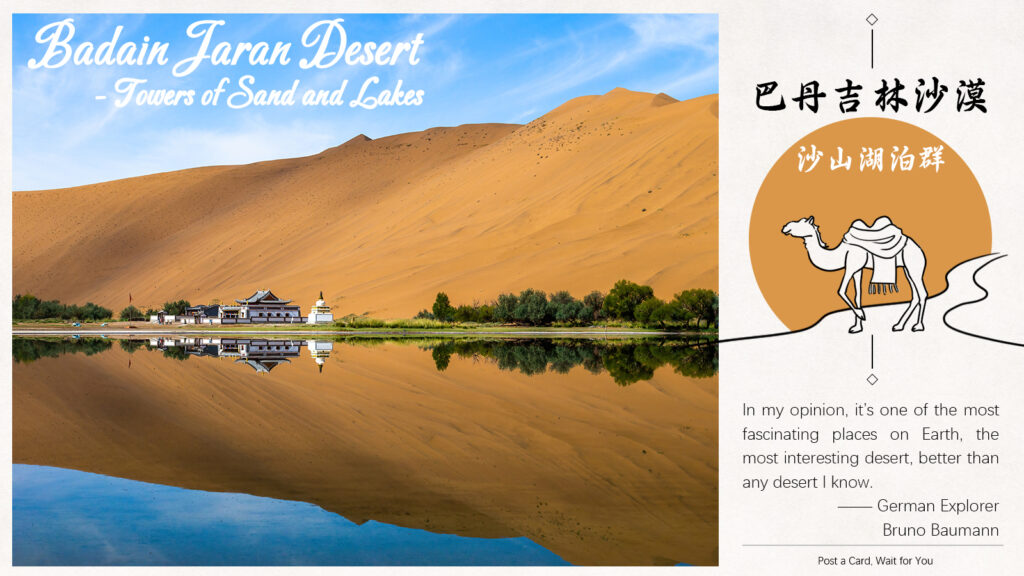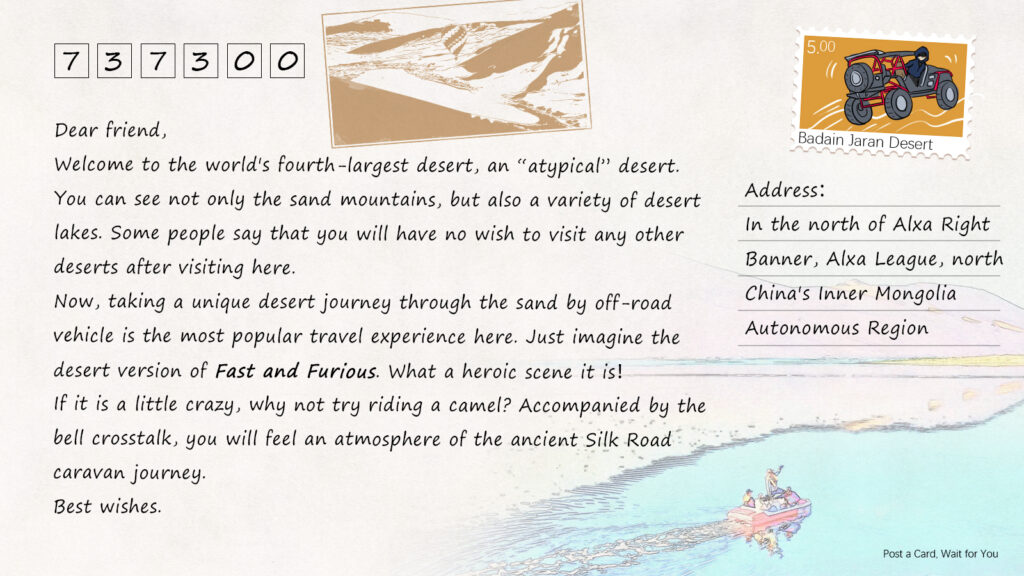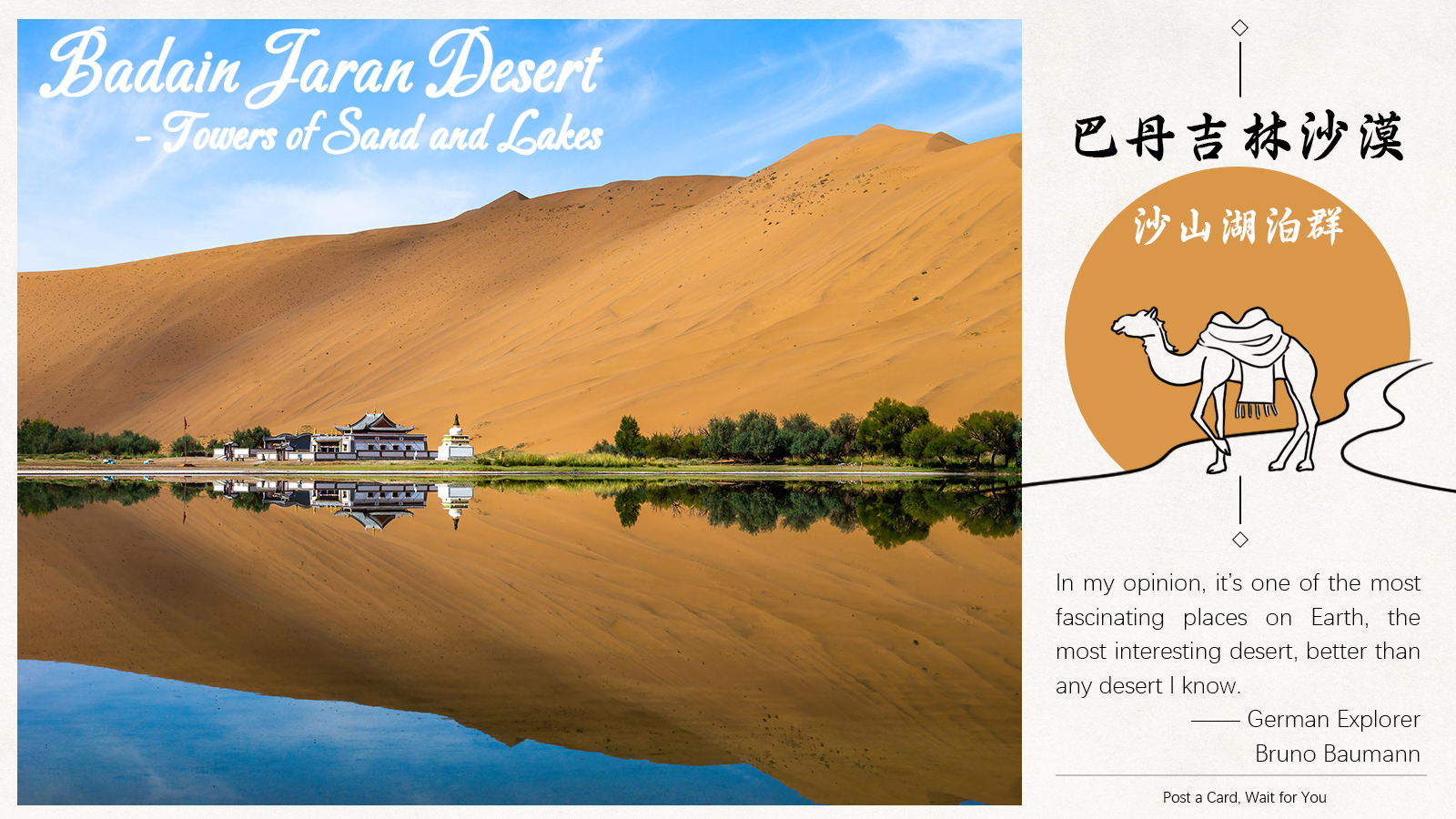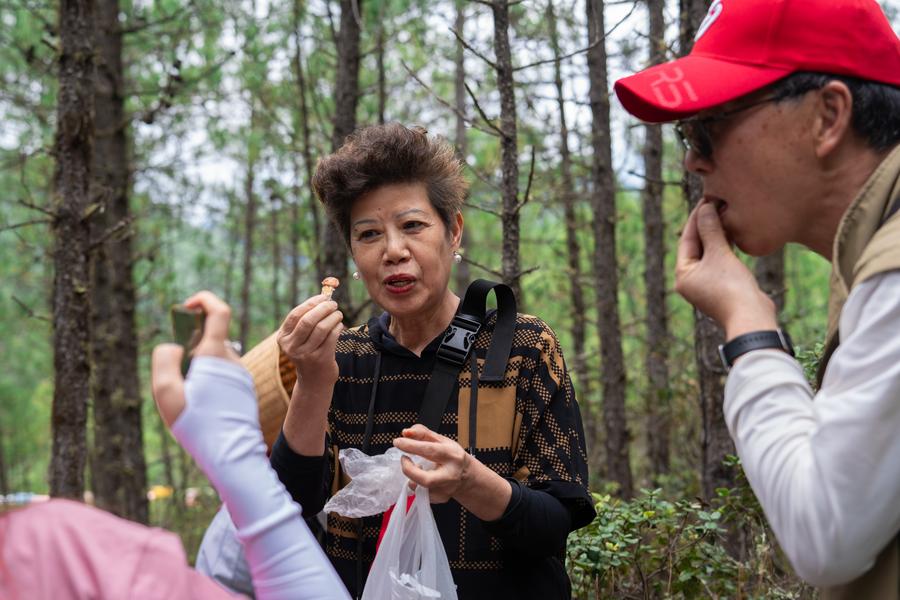

The Badain Jaran Desert with its stunning sand towers and lakes, is now a UNESCO World Heritage site.
China’s World Heritage sites have increased by 3 this year, and the Badain Jaran Desert – Towers of Sand and Lakes is one of them. Located in northwestern China across the provinces of Gansu, Ningxia, and Inner Mongolia. It is China’s third-largest desert and was added to the list by UNESCO in July.
There are many legends about the Badain Jaran Desert. Locals say the desert was once a vast grassland where a Mongolian shepherd named Badain lived. Badain came to the desert, discovered freshwater lakes, and settled down. Badain was a hardworking and kind man. He knew every inch of the grassland and loved the land where he lived.
As a magnificent natural landscape, Badain Jaran is the location of many film and television shows. The popular Chinese TV series Tomb of the Sea filmed here. Based on the mystery novel of the same name by famous Chinese novelist Nan Pai, the Gutong Jing (古潼京) mentioned in the Tomb of the Sea is located in Badain Jaran. There, lies the secret of immortality.
Despite the heat and dryness of Badain Jaran as you’d expect from a desert, it has over 100 lakes. They are hidden between some of the highest sand dunes in the world. This is also potentially where the area’s name originated, with the desert getting its name from its lakes as it means “mysterious lakes” in the Mongolian language.
One of the most fascinating of the lakes is the Daghtu Lake as it is bright pink in colour. Two different theories try to explain the particular color: the special minerals in the water, or brine shrimp, a micro creature living in salt lakes.
Beyond the colourful lakes, the desert is also home to the other “four wonders”, namely, sandy peaks, singing dunes, clear springs, and ancient temples. The reason for sand singing is just because the desert has multiple tall dunes. The dunes can produce a mysterious booming sound when the wind blows.
These spectacular attractions in Badain Jaran have lured thousands of tourists to punch in every year, including overseas tourists.
Written by Liu Sha, pictures created by Wang Di.
If you liked this article, why not read: Why do “foreign disciples” regards Wudang as second home











